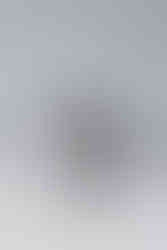Anna Zimmermann | Designer & Artist
- Onur Çoban
- Aug 14
- 4 min read
Updated: Aug 18

Vessels of Imperfection ©lHilzensauer
Anna Zimmermann is a Vienna-based designer and artist. Working at the intersection of object design and sculpture, she transforms imperfection into an aesthetic value through the narratives embedded in materials. Through the Feminist Welding Club, which she founded, she creates space for women in welding—a field traditionally dominated by men—turning the act of making into both a collective experience and a platform for questioning invisible boundaries. Her work begins with the question of who has access to certain fields and who is excluded, inviting us to rethink not only how objects are produced, but also how knowledge is transmitted and safeguarded. Merging traditional craftsmanship with experimental intervention, her practice reveals more than just aesthetics—it opens up a social and political space for dialogue.
We spoke with Zimmermann about her intuitive approach to making, her creative relationship with imperfection, the Vessels of Imperfection series, and her plans for the future.
Interview: Onur Çoban

Who is Anna Zimmermann? Can you briefly introduce yourself?
I’m Anna Zimmermann, a designer based in Vienna working at the intersection of object design and sculpture. My practice is material-driven, often embracing imperfection, balance, and playful experimentation. My background spans product design, graphic design, photography, and art direction, which allows me to approach my work from multiple perspectives and create strong narratives around it.
What factors do you consider when conducting material research or selecting materials for new projects? Could you tell us a bit about your material choices in your work?
I often start with the material itself, its properties, history, and cultural associations, before defining the final form. My current focus is on metal, especially aluminum, which I learned to weld myself. I love metal’s forgiving nature: you can grind, weld, polish, and repair it endlessly. Collaborating with artisans or traditional workshops also plays a big role, as I can learn their techniques and then adapt or shift them to create something new. This dialogue between traditional skill and experimental intervention keeps the work fresh.
Process Vessel ©Anna Zimmerman
“My design philosophy is guided by intuition, experimentation, and a deep respect for materials. I believe in leaving space for the unexpected and embracing imperfection as a vital part of the creative process. I aim for a balance between making and thinking, between handcraft and conceptual reflection. Beneath the aesthetic, there is often a social layer—many of my works engage with issues like gender equality in craftsmanship or the value of traditional techniques in a fast-paced, mass-production world.”
You’ve mentioned that you founded the Feminist Welding Club to create a judgment-free space for women to learn and grow together. How has this collective practice influenced your design approach, and how did the process of turning metalwork into a feminist form of expression unfold for you?
I founded the Feminist Welding Club out of my own insecurity about entering male-dominated workshops and a desire to challenge the barriers that still exist in metalwork. What began as a personal attempt to learn welding soon evolved into a collective practice, as many women around me also wanted to learn but had never felt welcome in those spaces.
Working together has definitely reshaped my design approach. Welding here is not just a technical skill, it becomes a shared performance where mistakes, experiments, and discoveries are embraced. The club blurs the line between learning and making, and has shown me how much energy and creativity come from doing things collectively. It also serves as an ongoing source of inspiration for my own practice, giving me the freedom to experiment and play.
Feminist Welding Club ©Anna Zimmerman
That exchange of solidarity, empowerment, and mutual support, now runs throughout my practice. For me, welding became a feminist expression not through added symbols, but by creating spaces of access and shared authorship.
Can you share a bit about the production process in your projects?
My process is intuitive. Often, I begin with an observation, a societal theme, or a material I want to explore. From there, I move into a phase of experimentation: testing, failing, and reworking; until the right direction emerges. In some works, the act of making itself becomes visible and integral to the final piece, turning production into a performative and narrative element.
Feminist Welding Club ©Anna Zimmermann
Among your projects so far, which one has excited you the most in terms of the design process and the final outcome?
One of my most exciting projects has been Vessels of Imperfection. This collection of cast aluminum vessels embraces the so-called “flaws” that naturally occur during the sand-casting process, such as seams, excess material, and irregular surfaces, and turns them into defining design features. Over nine months of collaboration with Viennese craftsman Martin Petermann, we questioned conventional casting methods, experimented with new approaches, and deliberately preserved traces of the making process. For me, the project represents a harmonious blend of traditional craftsmanship and an intuitive, process-driven design approach, where imperfection becomes the central aesthetic.
Vessels @mariaritsch
Can you tell us about the sources of inspiration behind your work? Who are the names you follow with interest, either in this field or across different disciplines?
I’m inspired by variation: new people, new challenges, and stepping outside my comfort zone. Spaces of craftsmanship, such as traditional workshops in Vienna, deeply influence me, as does time for reflection and “doing nothing,” which allows new ideas to emerge. Artists and designers I currently find interesting include Kim Lim, Eileen Gray, and Enzo Mari.
Are you excited about the future? What plans do you have ahead?
Yes! I’m preparing an upcoming exhibition with the Feminist Welding Club, where our making process will unfold live in the gallery. At the same time, I’m working on new pieces and have recently moved into a larger workshop, which opens up the possibility to work on a bigger scale and experiment with techniques I couldn’t explore before.






































































